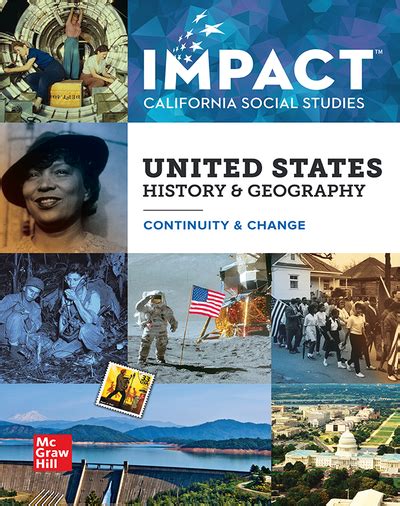United States History & Geography

The United States, comprising 50 states and a plethora of territories, is a nation steeped in a rich and diverse history, intertwined with its unique geography. From the earliest Native American inhabitants to the present day, the country's development has been significantly influenced by its geographical features, including vast mountain ranges, expansive river systems, and extensive coastlines along the Atlantic and Pacific Oceans. The interaction between the physical landscape and human activity has shaped the course of American history, from the westward expansion and the construction of the transcontinental railroad to the development of major cities and the formation of regional identities.
Geographically, the United States is divided into several distinct regions, each with its own set of characteristics and challenges. The Appalachian Mountains, for instance, stretch from Canada in the north to Alabama in the south, forming a barrier that has historically separated the eastern seaboard from the interior. The Great Plains, vast and relatively flat, have been instrumental in the country's agricultural development, while the Rocky Mountains, with their rugged terrain and rich mineral deposits, have played a crucial role in mining and the development of the American West. Understanding these geographical divisions is essential for grasping the complexities of American history and the diverse experiences of its people.
Key Points
- The United States' geographical diversity has significantly influenced its historical development.
- Major mountain ranges, river systems, and coastlines have played crucial roles in shaping American history.
- The country is divided into distinct geographical regions, each with its unique characteristics and historical significance.
- The interaction between geography and human activity has been a driving force behind the nation's expansion and development.
- Understanding American geography is essential for a comprehensive grasp of the country's history and regional identities.
Geographical Regions and Their Historical Significance

The geographical regions of the United States have not only provided the backdrop for historical events but have also been active participants in shaping the nation’s narrative. The Mississippi River, for example, has been a vital transportation artery, facilitating the exchange of goods, ideas, and cultures between the North and the South. The California Gold Rush of the mid-19th century, spurred by the discovery of gold in the western territories, drew thousands of settlers and contributed to the rapid expansion of the United States across the continent. Each region, with its unique geography, has contributed to the complex tapestry of American history, weaving together stories of exploration, settlement, conflict, and development.
The Role of Mountains and Rivers in Shaping American History
MOUNTAINS AND RIVERS have been pivotal in the development of the United States. The Appalachian Mountains, for instance, presented a significant barrier to early settlers, influencing the pattern of westward expansion. The construction of the Erie Canal, which connected the Great Lakes to the Hudson River, marked a significant milestone in the country’s engineering history and facilitated trade between the East Coast and the interior. Similarly, the Colorado River, with its challenging terrain and hydroelectric potential, has been the focus of extensive engineering projects, including the Hoover Dam, one of the world’s largest and most complex dams at the time of its construction. These geographical features have not only challenged human ingenuity but have also been harnessed to drive economic growth and development.
| Geographical Feature | Historical Significance |
|---|---|
| Appalachian Mountains | Barrier to early westward expansion, influencing settlement patterns. |
| Mississippi River | Vital transportation artery, facilitating trade and cultural exchange between the North and the South. |
| Colorado River | Source of hydroelectric power and subject of significant engineering projects, including the Hoover Dam. |

Regional Identities and the Impact of Geography

The geographical diversity of the United States has also contributed to the development of distinct regional identities. The South, with its fertile plains and humid climate, has historically been associated with agriculture, while the Northeast, with its dense forests and rugged coastline, has been a hub for industry and trade. The American West, characterized by its vast open spaces, arid deserts, and mountainous terrain, has embodied the spirit of exploration and frontier settlement. These regional identities, shaped by geography, have played a significant role in American culture, influencing everything from dialects and cuisines to political affiliations and social values.
Challenges and Opportunities in the American Geography
Despite the many opportunities that the American geography has presented, it has also posed significant challenges. Natural disasters such as hurricanes, earthquakes, and wildfires have periodically affected different regions, highlighting the need for resilience and disaster preparedness. Environmental concerns, including deforestation, pollution, and climate change, have underscored the importance of sustainable practices and conservation efforts. However, these challenges also present opportunities for innovation, collaboration, and growth, as the nation continues to evolve and find new ways to interact with its geographical environment.
How has the geography of the United States influenced its historical development?
+The geography of the United States has played a crucial role in its historical development, shaping patterns of settlement, trade, and conflict. From the Appalachian Mountains to the Mississippi River and the Great Plains, geographical features have influenced the course of American history, presenting both challenges and opportunities for growth and expansion.
What are some of the distinct geographical regions of the United States, and how have they contributed to regional identities?
+The United States is divided into several distinct geographical regions, including the Northeast, the South, the Midwest, and the West. Each region has its unique geographical characteristics, which have contributed to the development of distinct regional identities, influencing culture, economy, and politics in profound ways.
How have natural disasters and environmental concerns impacted the relationship between Americans and their geography?
+Natural disasters and environmental concerns have underscored the importance of understanding and respecting the American geography. These challenges have prompted efforts in disaster preparedness, sustainable practices, and conservation, highlighting the need for a balanced relationship between human activity and the natural environment.
In conclusion, the history and geography of the United States are intricately intertwined, with each influencing the other in profound ways. As the nation continues to evolve, understanding this complex relationship will remain essential for addressing the challenges and opportunities that lie ahead, from environmental sustainability to economic development and social cohesion. By embracing the diversity and richness of American geography and history, we can foster a deeper appreciation for the land, its people, and their shared story.



